Today, B2B buyers expect companies to respond instantly: Buyer demand for immediacy has grown across all communication channels by an average of 64% year-over-year.
This is hardly surprising.
Picture this. Your ideal customer lands on your website — either because your marketing team spent many hours and dollars driving them there or because your sales reps reached out again and again. But, once there, you leave them to search for answers and resources alone.
Buyers now have more options than ever. If they don’t immediately find what they’re looking for on your website, they’re going to bounce.
Conversational Sales is the best way to prevent this nightmare scenario. Through authentic conversations that happen as soon as your buyer lands on your site, you can build a healthy pipeline of qualified opportunities and close more deals, faster.
And we’re not just talking about live chat. Here’s how you can use Conversational Sales across multiple channels to maximize buyer engagement.
We recently spoke about Conversational Sales on a webinar hosted by Pavilion. If you want to watch the recording, click here. Otherwise, keep reading for all the insights💡
How Does Conversational Sales Work?
In the new revenue era of sales, buyers are the ones in control. As a seller, your job is no longer to sell but to help customers buy.
Buyers want trusted advisors — someone who knows exactly what they want and can help them get it. To do this, you need the Conversational Framework for Sales.
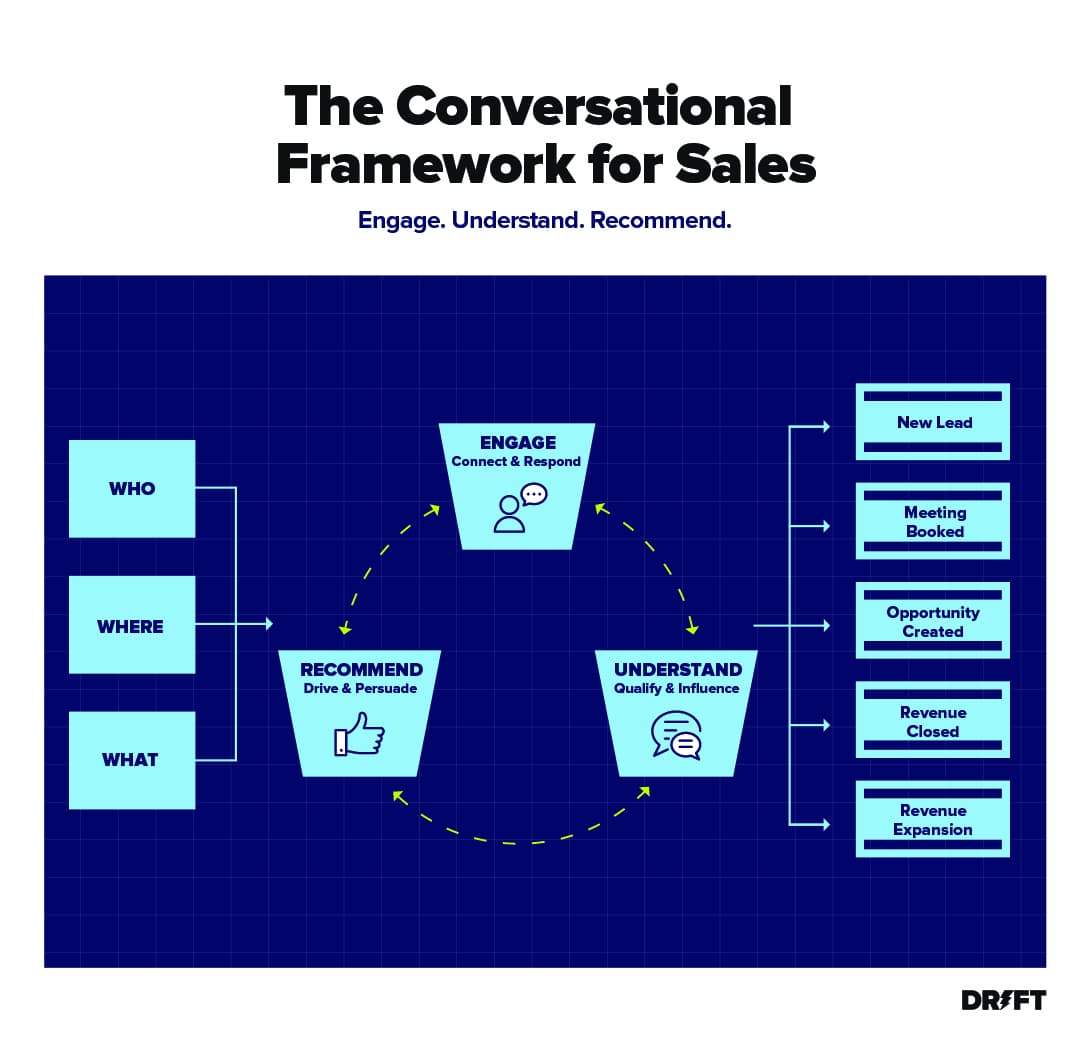
The Conversational Framework for Sales is your roadmap to understanding the buyer. You want to focus on answering four things:
- Who: Unpack the individual. Are they a complete stranger, a target account, or an existing customer?
- Where: Determine where the buyer is in the sales cycle. Are they ready to commit or did they just start looking into solutions?
- What: Look at what prompted the buyer to engage with you. Triggers, like downloading an ebook or chatting with a bot, are windows into your buyer’s interests and pain points.
All this adds up to why. You can think about this in two ways: Why is the buyer on your website? And why are you interacting with them?
These four questions are the ingredients you need for a personalized buying experience. But, to actually deliver, you have to follow the three steps of the Conversational Framework:
- Engage the buyer.
- Understand their interests and pain points.
- Recommend the next best step.

Although the conversational experience differs between channels, the flow of the conversation should always be the same. Whether you’re on the phone or in live chat, Conversational Sales goes back to these three steps. Below, we’ve broken down how you can use these tactics to maximize engagement across all your conversational channels.
1. Respond Quickly with Live Chat
Live chat is all about fast response times. Nearly half of all buyers expect an immediate response when engaging with live chat.
Buyers no longer have the patience to complete a form and wait for hours (sometimes days) to hear back from you. You want to engage your site visitors when their intent is highest.
This is where you can work with chatbots to provide the red carpet experience. For example, with an unknown buyer, your bot can provide resources and qualify the site visitor before a sales rep joins the conversation. That way, the sales rep can leverage data and campaign tracking to engage the buyer, ask value-driving questions, and recommend a next step.
Here’s what that looks like in action 👇
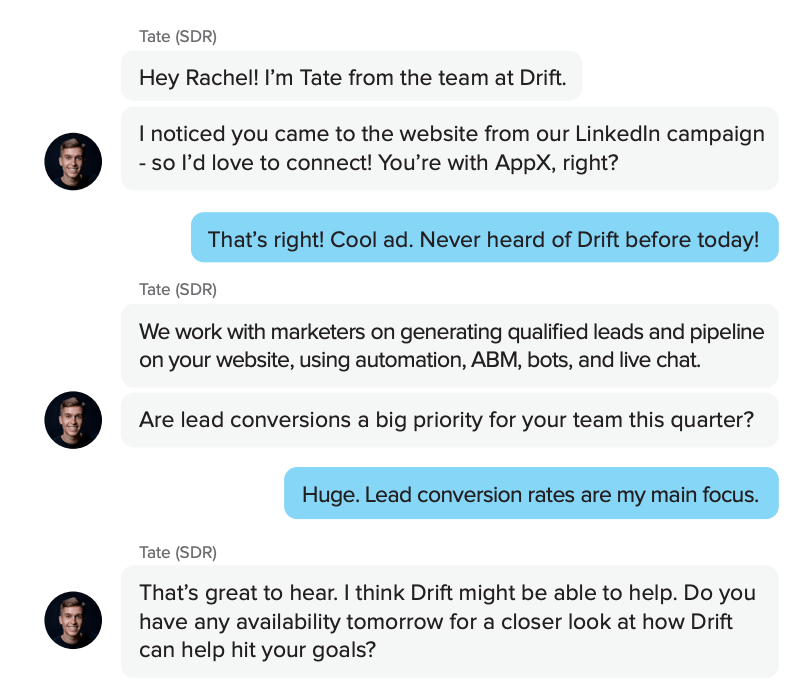
This is the same for a known buyer. Here, though, you’ll want to use notifications so that your sales reps can immediately trade places with the bot. From there, your rep can personalize the conversation with insights from the buyer’s previous activity.
Regardless of who the buyer is, your goal is to recommend a solution that fits the buyer’s needs. If you book a meeting, that’s great. But keep in mind that some buyers won’t be ready for a sales conversation, and you’ll want to give them relevant content instead.
2. Personalize Buyer Engagement Over the Phone
What’s the difference between phone and live chat? When you reach out over the phone, you’re talking to someone you know, likely an ideal buyer. It’s important, then, to personalize the conversation based on what you know about the buyer.
Below is an example (with the buyer’s responses omitted) 👇
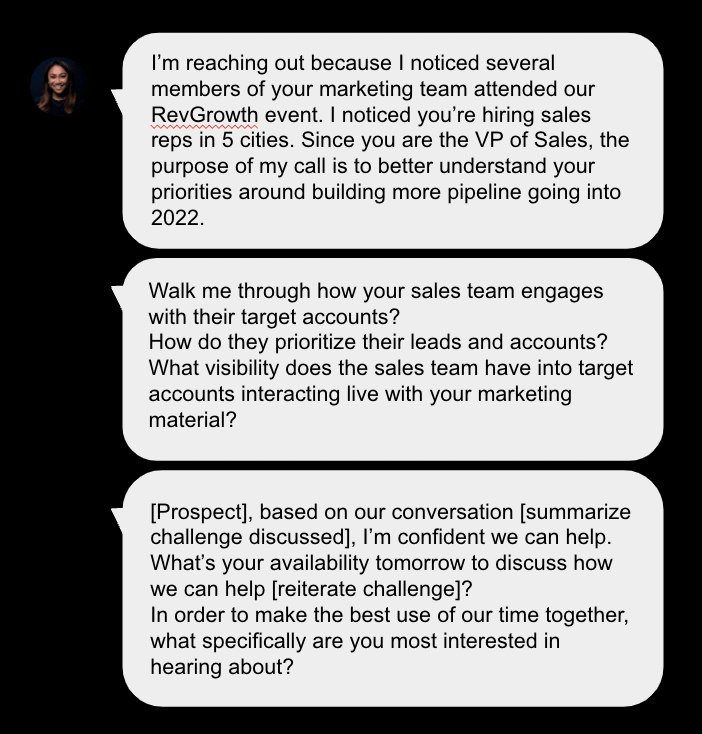
Here, the sales rep starts out with a personalized greeting that draws on the account’s intent signals (attending a Drift event) and the buyer’s persona (VP of Sales). This personalization extends into the specific questions that the rep asks.
At the end of the conversation, the sales rep addresses the challenges they discussed with the buyer in order to book a meeting.
Ultimately, you want to lead with value so that the buyer will want to take the next call. Rather than waste someone’s time, you want to confirm that your company can help solve the buyer’s issues. One thing we like to say is, “At the very minimum, you’re going to walk away with some ideas on how our product or solution can help.”
3. Land the Next Meeting with Follow-Up Emails
Email is not as…popular as it used to be, but it’s still a channel that buyers use frequently. Even though email usage has dropped by 25% since 2020, buyers said email was third among the channels they used the most often.
Email is a great way to follow up and keep the conversation going. Here’s an example👇
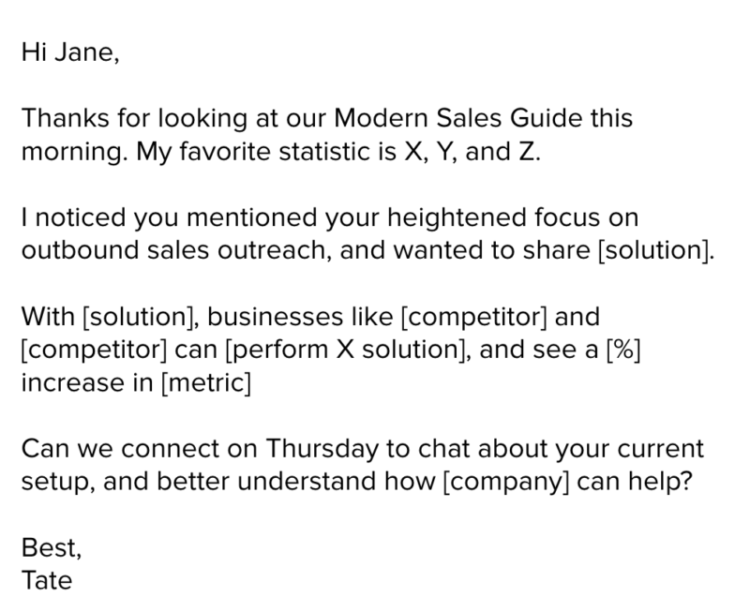
While you can have a back and forth conversation, your goal should be to make that first email count. In this example, the rep follows up on the buyer after they downloaded a guide. Then, they personalize the email with a detailed rundown of a solution that is relevant to the buyer’s business interests.
By tailoring your follow-up to a buyer’s behavior and focusing on the relevant next step (in this case, booking a meeting), the more likely you’ll succeed in getting the buyer to respond.
4. Never Miss an Opportunity with Virtual Selling Assistants
So far, we’ve focused on human-to-human interactions. But what if you’re not available because you’re offline or talking to other buyers?
That’s exactly where Virtual Selling Assistants (VSAs) come in. These AI chatbots analyze site visitors to see if they fit your ideal customer profile (ICP) and are worth your sales reps’ time. If they are, VSAs will make sure to get the buyer in touch with sales — either by routing in a rep or (if they’re unavailable) booking time for a future meeting.
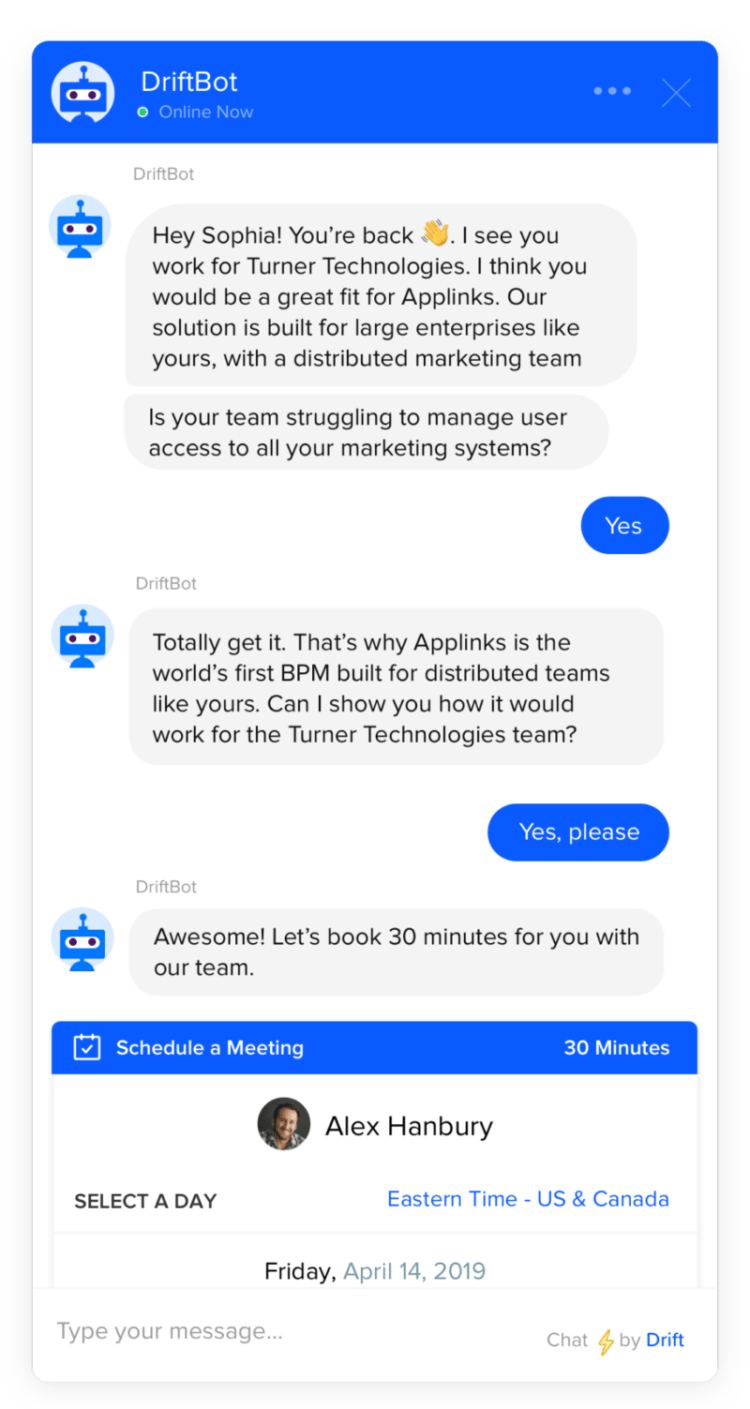
But where VSAs truly shine is with buyers who don’t fit your ICP or aren’t ready to chat with sales. By taking the lead with these visitors, VSAs save your sales reps’ time while also making sure your customers don’t need to jump through hoops to get what they need.
So, even if you don’t book a meeting through your VSA, you still have more data to better tailor your future outreach and that puts you one step closer to signing on a new buyer.
Welcome to the Revenue Era
We are in a new era of sales. Now, the best buying experience wins — which means you have to deliver a quick and authentic experience to stay ahead of the game.
Conversational Sales takes a consultative approach to B2B sales so that you guide your buyer to the right solution for them. With the power of conversations, you can maximize engagement across all your channels and drive revenue more quickly and efficiently.









